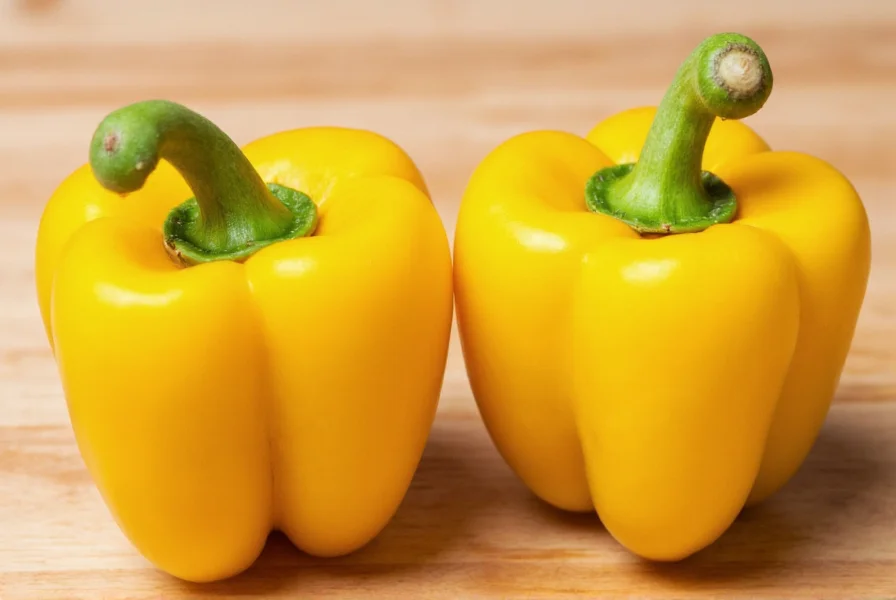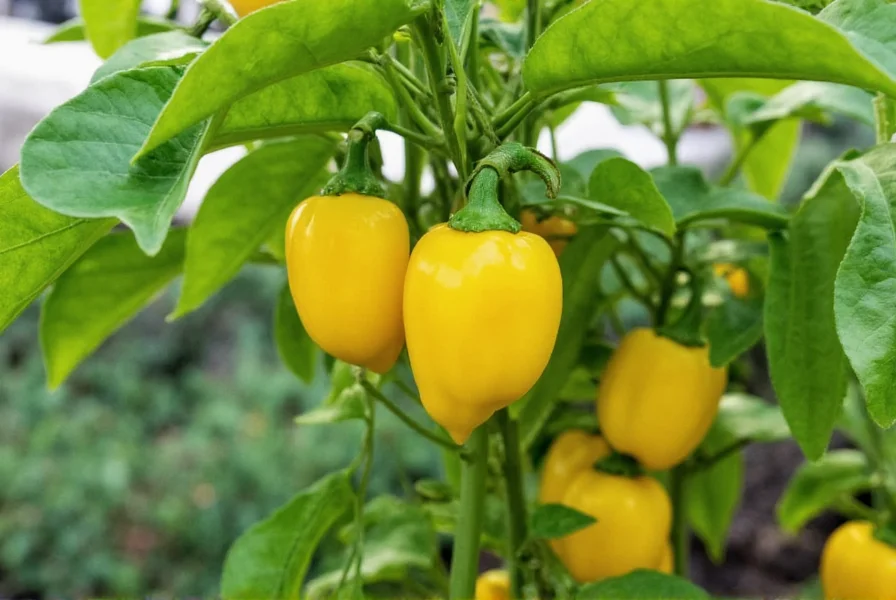Banana peppers (Capsicum annuum) belong to the same species as bell peppers and jalapeños but stand out with their unique flavor characteristics. These medium-length peppers (typically 5-8 inches) start green, mature to vibrant yellow, and eventually turn red when fully ripe. Their mild heat level makes them accessible to most palates while still offering the complex flavor profile that distinguishes chili peppers from sweet varieties.
Understanding Banana Pepper Characteristics
What sets banana peppers apart from other chili varieties? Their distinctive curved shape and gradual color transformation provide visual identification, while their flavor profile delivers a perfect balance between sweetness and subtle heat. Unlike bell peppers which contain zero capsaicin (the compound responsible for heat), banana peppers contain minimal amounts, placing them at the very bottom of the Scoville scale.
| Pepper Type | Scoville Heat Units | Flavor Profile | Common Uses |
|---|---|---|---|
| Banana Pepper | 0-500 SHU | Sweet, tangy, mild citrus | Pickled, stuffed, salads |
| Pepperoncini | 100-500 SHU | Vinegary, slightly bitter | Pickled, sandwiches, salads |
| Hungarian Wax | 1,000-15,000 SHU | Progressively hotter as it ripens | Fresh eating, pickling |
Banana Pepper vs Similar Varieties
Many home cooks confuse banana peppers with pepperoncini and Hungarian wax peppers. While they share visual similarities, key differences exist:
Banana peppers maintain consistent mildness throughout ripening, whereas Hungarian wax peppers start mild but become significantly hotter as they mature from yellow to red. Pepperoncini typically have a more pronounced tangy flavor due to their common preparation method (vinegar-based pickling), while fresh banana peppers offer a cleaner, sweeter taste. The shape also differs slightly—banana peppers tend to be longer and more dramatically curved than pepperoncini.

Culinary Applications of Banana Peppers
Chefs value banana peppers for their versatility in both raw and cooked applications. Their mild heat allows them to enhance dishes without overwhelming other flavors. Popular culinary uses include:
- Pickling: The most common preparation method, where sliced peppers are preserved in vinegar brine with garlic and spices
- Stuffed peppers: Their hollow shape makes them ideal for filling with cheese, grains, or meat mixtures
- Pizza toppings: Providing color contrast and mild flavor without excessive heat
- Salads and sandwiches: Thinly sliced for added texture and subtle flavor
- Salsas and relishes: Combined with other vegetables for mild, flavorful condiments
Nutritional Benefits of Banana Peppers
Beyond their culinary appeal, banana peppers offer notable nutritional advantages. A 100g serving provides:
- 140% of the recommended daily intake of vitamin C
- Significant amounts of vitamin B6 and vitamin K
- Approximately 3g of dietary fiber
- Only 27 calories per serving
- Antioxidants including carotenoids and capsaicinoids
These nutritional properties contribute to potential health benefits including improved immune function, reduced inflammation, and better digestive health. Unlike hotter peppers that may cause discomfort for some individuals, banana peppers deliver these benefits with minimal gastrointestinal irritation.
Growing Banana Peppers Successfully
For gardeners interested in cultivating banana peppers, these plants thrive in warm climates with well-draining soil and full sun exposure. Start seeds indoors 8-10 weeks before the last frost date, then transplant outdoors when soil temperatures consistently exceed 60°F (15°C). Banana pepper plants typically reach 18-24 inches in height and produce abundant fruit throughout the growing season.
Harvest banana peppers when they turn bright yellow for the classic mild flavor, or allow them to ripen to red for slightly sweeter, more complex flavor. Regular harvesting encourages continued production. When growing banana peppers, watch for common pests like aphids and spider mites, which can be managed with insecticidal soap or neem oil.

Preservation and Storage Techniques
Proper storage extends the shelf life of fresh banana peppers. When stored in a perforated plastic bag in the refrigerator crisper drawer, they typically remain fresh for 2-3 weeks. For longer preservation, consider these methods:
- Pickling: The most popular preservation method, creating refrigerator pickles that last 2-3 months or canned versions with shelf stability
- Freezing: Slice peppers, spread on a baking sheet to freeze individually, then transfer to freezer bags (best used within 6 months)
- Drying: Use a food dehydrator or oven on lowest setting to create dried peppers for grinding into mild chili powder
- Roasting and freezing: Roast peppers, remove skins, then freeze for use in cooked dishes
When pickling banana peppers, a basic brine of vinegar, water, salt, and sugar with optional garlic and spices creates the classic flavor profile. Allow pickled peppers to mature for at least two weeks for optimal flavor development.
Common Questions About Banana Peppers
Are banana peppers actually hot?
Banana peppers rank between 0-500 Scoville Heat Units, placing them at the very mild end of the chili pepper spectrum. Most people perceive them as having little to no heat, with primary flavor notes being sweet and tangy rather than spicy. Their heat level is significantly lower than jalapeños (2,500-8,000 SHU) and even milder than many bell peppers that register at zero SHU.
What's the difference between banana peppers and pepperoncini?
While visually similar, banana peppers and pepperoncini differ in several key aspects. Banana peppers are typically longer and more dramatically curved with a brighter yellow color when mature. Pepperoncini have a slightly more tapered shape and often appear more wrinkled. Flavor-wise, fresh banana peppers are sweeter with citrus notes, while pepperoncini have a more pronounced tangy, slightly bitter flavor—though this difference is less noticeable when both are pickled.
Can you eat banana peppers raw?
Yes, banana peppers are excellent eaten raw and are commonly used this way in salads, sandwiches, and as crudité accompaniments. Their mild flavor and crisp texture make them particularly suitable for raw consumption compared to hotter pepper varieties. When raw, they offer a refreshing crunch with subtle sweetness and minimal heat that complements rather than dominates other ingredients.
How do you know when banana peppers are ripe?
Banana peppers progress through distinct color stages as they ripen: starting green, then turning bright yellow (most commonly harvested stage), and finally maturing to red. The yellow stage offers the classic banana pepper flavor—sweet with mild tang. Red-ripe peppers are slightly sweeter and more complex in flavor. Ripe peppers should feel firm with smooth, glossy skin and detach easily from the plant with a gentle twist.
What are the health benefits of eating banana peppers?
Banana peppers provide significant nutritional benefits, particularly as an excellent source of vitamin C (providing 140% of daily needs per 100g). They also contain vitamin B6, vitamin K, dietary fiber, and antioxidants including carotenoids. These nutrients support immune function, reduce inflammation, promote healthy digestion, and contribute to cardiovascular health. Unlike hotter peppers that may cause discomfort for some people, banana peppers deliver these benefits with minimal gastrointestinal irritation due to their mild heat level.











 浙公网安备
33010002000092号
浙公网安备
33010002000092号 浙B2-20120091-4
浙B2-20120091-4